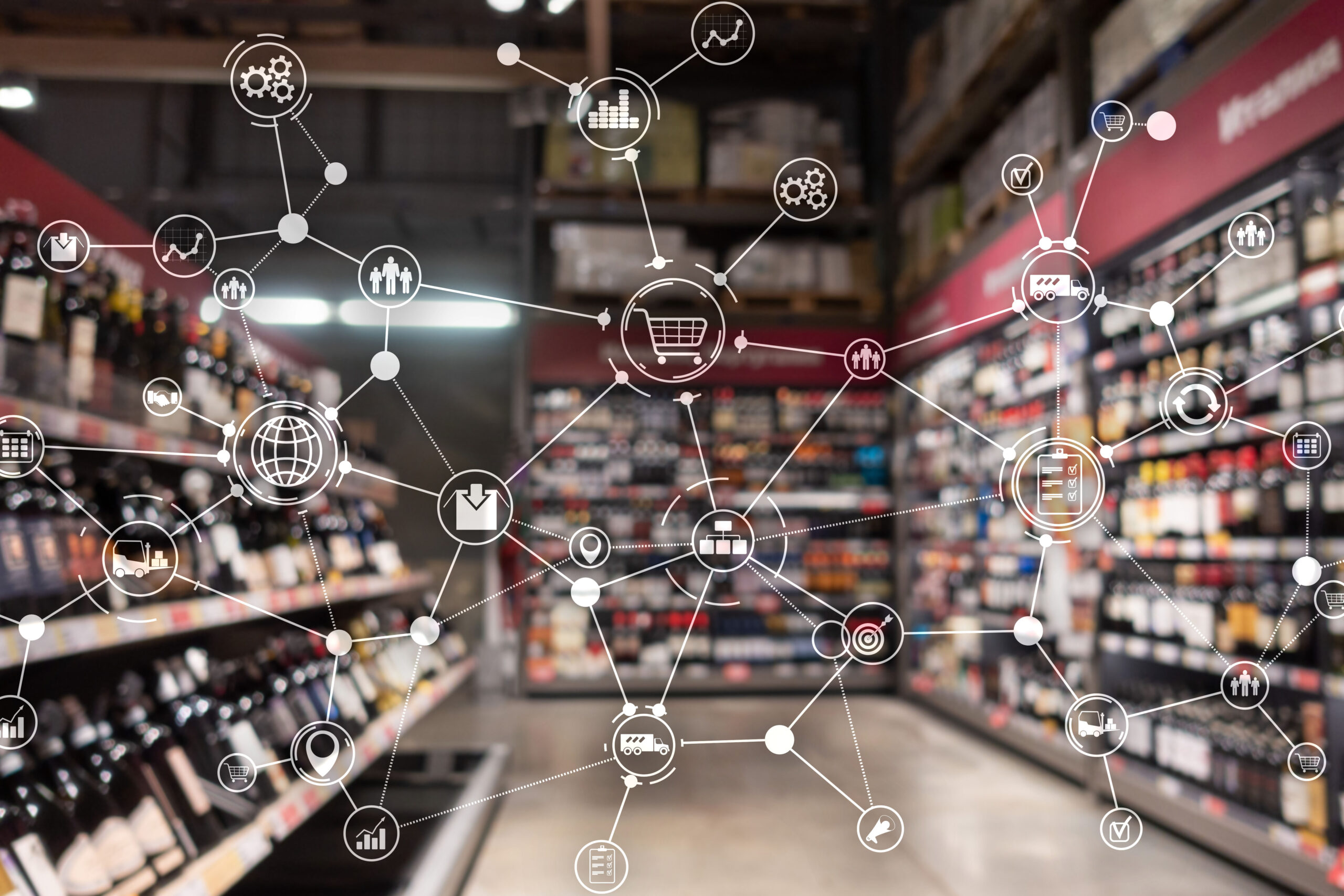It’s not unusual for people to be a bit leery of the concept of virtual reality. Because it doesn’t yet exist in every household, the technology comes with a bit of a stigma—it’s something futuristic and sounds exciting, but the lack of mass market status means some predict its eventual demise. But those people aren’t thinking outside the box.
VR in the 21st century is already being used in many different industries, from healthcare to real estate. The technology is becoming increasingly sophisticated, and shows no signs of slowing down. Case in point: the global augmented and virtual reality market is set to reach $571.42 billion by 2025, according to Allied Market Research.
In the retail space, VR is being leveraged in a few different but significant ways. From the consumer side, we’re seeing virtual dressing rooms, virtual pop up shops, and VR arcades. From a B-to-B perspective, VR is changing the game when it comes to in-store planning. Retailers and manufacturers are learning that creating, evaluating and presenting new concepts in virtual reality is saving time and money, two extremely important factors in today’s uber-competitive market.
Yet some hesitant adapters to the technology are skeptical that virtual is really a viable substitute for real-world processes. How does it really work? How does it compare to traditional methods? Let’s put some of those doubts to rest.
A Brief History of Validating Virtual Believe it or not, early simulated environments using head-mounted devices were in use in the 1950s and 60s. What we know as “virtual reality”, however, is credited to being developed in the 1980s and gained steam in the gaming world until the mid-1990s. Around that time, Indiana University’s Professor Raymond R. Burke was experimenting with simulated retail shelf sets that used VR for market research. In a study published by Burke in 1996, he established that “laboratory data can accurately predict the brand market share and consumer price sensitivity observed in the supermarket.” Through his data, it was found that virtual store sales correlated between 0.90 to 0.94, a very close match to real world results. Burke’s study would be the foundation for virtual reality solutions for retail—he was just a little ahead of his time.
The next decade proved rough for virtual reality. The technology needed to be more advanced—people were experiencing motion sickness, and it wasn’t as realistic as everyone had hoped—but the resources to figure it out just didn’t exist yet. Fast forward another decade and say hello to smart phones, the Internet, HD TV and social media. Technology was welcoming another big boom, and VR was getting another chance—but this time it didn’t disappoint. Graphics became dramatically better, interfaces improved, and use-cases went far beyond gaming.
InContext Solutions came on the scene during this time in 2009, and a whole new era of VR was re-born: virtual reality for business. Specifically, retail.
How We Get Our NumbersTaking traditional marketing and research methods and transporting them into a virtual reality simulation wouldn’t work unless the results were just as accurate as the real world. Sure, VR may be quicker, less expensive way to get retail and shopper insights, but if it’s not accurate, it’s useless.
The fact is, what people say they do (Purchase Intent), is not always what they do in the real world. This has consistently been documented both by academics and leading research firms. That’s why behavior is so important. Following in Burke’s footsteps, InContext began conducting virtual market research which allowed us to gather shopper data that proved people behave very similarly within a virtual simulation as they would if they were shopping in an actual store.
We validated this by comparing shares of “sales” that occur in the virtual environment to shares of sales that occur in real stores, in the same timeframe and type of store with the same test conditions as were used for the virtual store test.
For example, in one particular instance a company provided a total of 40 products or groups of products that were used as units of comparison. The correlations comparing shares of real-world sales with shares of virtual sales in the virtual store simulations went as follows:
- For all units of these products or groups of products the correlation was .99
- For the four sub-categories the correlation was .99
- For the 16 brands the correlation was .9
- For the 18 products the correlation was .91
In another example, a large CPG manufacturer completed a United States pilot study in the Quick Clean division to compare results and predictions of three shopper research methodologies: In-store study (using real shopper data), in-house virtual store method using in-person interviews, and virtual store study using InContext Solutions’ online methodology.
Each methodology produced the same significant insights which would inform the same business decision. This indicated that virtual store methodologies are good predictors of actual in-store shopper behaviors.
And indeed, people tend to behave as if they were in a real store—for instance, we’ve had feedback from respondents that the reason they didn’t “purchase” a particular item was that it was too high on the shelf to reach—never mind that in VR there are no physical limitations. It’s amazing how realistic virtual can be.
VR Is Only Going To Continue To Improve
Today, virtual and augmented reality technologies are rolling up into what is now sometimes knows as mixed reality, providing even more realistic artificial environments that seamlessly interact with our real-world experiences. There won’t be such a fine line between the two worlds; and soon we won’t be talking about how virtual correlates to the real world at all—we’ll just be talking about the results. For now, forward-thinking retailers and manufacturers can be confident that leveraging VR solutions will not only make the process more efficient, but that what they see will be what they get come time to launch.




